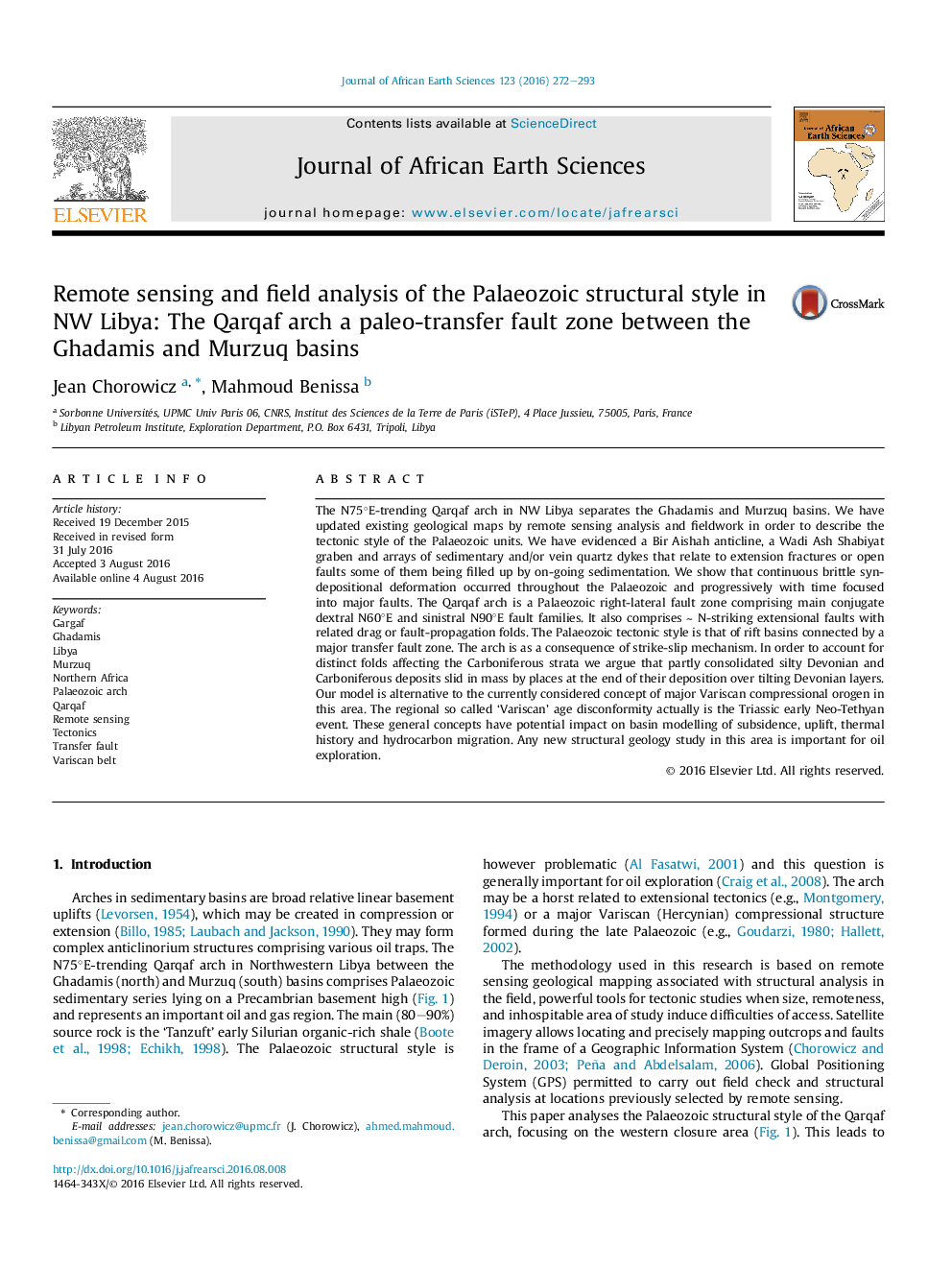| Article ID | Journal | Published Year | Pages | File Type |
|---|---|---|---|---|
| 4728183 | Journal of African Earth Sciences | 2016 | 22 Pages |
•The Qarqaf arch is a Palaeozoic transfer fault zone between forming basins.•Regional tensional deformation does not depend on a Variscan compressional belt.•Remote sensing and fieldwork permit easy update of geological maps.•Remote sensing and field structural analysis are combined for tectonic study.
The N75°E-trending Qarqaf arch in NW Libya separates the Ghadamis and Murzuq basins. We have updated existing geological maps by remote sensing analysis and fieldwork in order to describe the tectonic style of the Palaeozoic units. We have evidenced a Bir Aishah anticline, a Wadi Ash Shabiyat graben and arrays of sedimentary and/or vein quartz dykes that relate to extension fractures or open faults some of them being filled up by on-going sedimentation. We show that continuous brittle syn-depositional deformation occurred throughout the Palaeozoic and progressively with time focused into major faults. The Qarqaf arch is a Palaeozoic right-lateral fault zone comprising main conjugate dextral N60°E and sinistral N90°E fault families. It also comprises ∼ N-striking extensional faults with related drag or fault-propagation folds. The Palaeozoic tectonic style is that of rift basins connected by a major transfer fault zone. The arch is as a consequence of strike-slip mechanism. In order to account for distinct folds affecting the Carboniferous strata we argue that partly consolidated silty Devonian and Carboniferous deposits slid in mass by places at the end of their deposition over tilting Devonian layers. Our model is alternative to the currently considered concept of major Variscan compressional orogen in this area. The regional so called ‘Variscan’ age disconformity actually is the Triassic early Neo-Tethyan event. These general concepts have potential impact on basin modelling of subsidence, uplift, thermal history and hydrocarbon migration. Any new structural geology study in this area is important for oil exploration.
Graphical abstractFigure optionsDownload full-size imageDownload as PowerPoint slide
